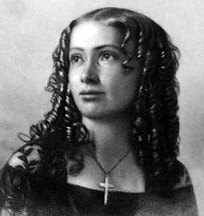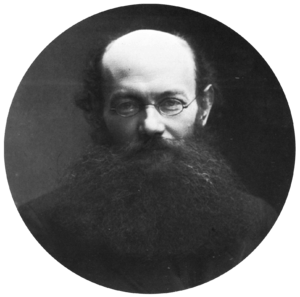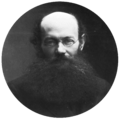Cleveland Hall, London facts for kids
Quick facts for kids Cleveland Hall |
|
|---|---|
| General information | |
| Status | Demolished |
| Type | Meeting hall |
| Address | 54 Cleveland Street |
| Town or city | London |
| Country | England |
| Coordinates | 51°31′14″N 0°08′20″W / 51.520574°N 0.138792°W |
| Completed | 1861 |
Cleveland Hall was a busy meeting place in Cleveland Street, London. From 1861 to 1878, it was a major center for the British secularist movement. Secularists were people who believed that society should be organized without religious influence. After 1878, the hall was used for many different things before it became a Methodist meeting hall.
Contents
Where Was Cleveland Hall Located?
Cleveland Hall was built with money left by William Devonshire Saull. He was an Owenite, someone who believed in creating a fair and equal society. In 1861, Cleveland Hall took over from another building as London's main spot for freethought. Freethought means thinking for yourself and questioning traditional ideas, especially about religion.
The hall was owned by different people over time. This meant it wasn't always used for freethought meetings. The building was at 54 Cleveland Street, in Marylebone, London. This area, just north of Soho, was home to many people who had moved to London from other countries.
In 1877, a newspaper called Secular Review and Secularist said the hall was a "large and commodious building." It was known for its history of promoting secular ideas. The hall was close to Fitzroy Square. It was also just a short walk from bus stops on Tottenham Court Road or from Portland Road Station. However, another person described its location as being in a "mass of pauperism" (a very poor area).
A Hub for Secularism
In the 1860s, Cleveland Hall became a rival to another important secularist venue. Several speakers, including George Holyoake and Harriet Law, preferred Cleveland Hall. They didn't agree with the leadership of Charles Bradlaugh, another big name in the secularist movement.
George William Foote remembered coming to London in 1868. He said he had "plenty of health and very little religion." A friend took him to Cleveland Hall. There, he heard Mrs. Law speak. He said she was very good at discussing the Bible. A few weeks later, Foote heard Bradlaugh speak at the hall too. Foote later became very involved in the secular movement.
What Happened at Secularist Meetings?
A book from 1870 called The Religious Life of London described Cleveland Hall as the main place for Secularists. The doors would open at 7 PM, and talks would begin at 7:30 PM. People paid a small fee to get in. There was an extra charge for seats closer to the front.
The room was usually "half full of respectable and sharp working men." These men were often very sure of their beliefs and enthusiastic.
Some of the talks given at the hall included:
- Charles Watts on An Impartial Estimate of the Life and Teachings of the Founder of Christianity.
- Bradlaugh on Capital and Labour, and Trades' Unions (about money, work, and workers' groups).
- Harriet Law on The Teachings and Philosophy of J.S. Mill, Esq. (a famous thinker).
- Harriet Law also spoke about The Late Robert Owen: a Tribute to His Memory (another social reformer).
- She also gave an Appeal to Women to Consider their Interests in Connection with the Social, Political and Theological Aspects of the Times.
After each talk, there was an open discussion where people could share their thoughts.
In 1869, The Gospel Magazine reported on a special event at Cleveland Hall. They saw a baby being welcomed into the Atheist group. The baby's mother publicly gave the child to Mr. Bradlaugh, who gave it an "Atheistic blessing." The writer of the article thought these events showed that a "terrible conflict" was coming.
Other Uses by Secularists
The secularists also allowed other groups to use Cleveland Hall. For about a year starting in November 1865, the hall was rented on Sunday evenings. An American Unitarian who was against slavery, Moncure Daniel Conway, gave talks there. He wanted to speak to working-class people. However, his audience was mostly well-dressed people from the lower-middle class.
In April 1868, a meeting of house-painters was held at the hall. They discussed working together with other painters' groups. In September 1868, a group called the Artisans' Club and Trades' Hall Company met there. They were trying to raise money for a hall that different trade and benefit societies could use.
Cleveland Hall's Changing Uses
In 1869, the ownership of Cleveland Hall changed. In 1870, the Evangelical Magazine and Missionary Chronicle noted something interesting. The Reverend Charles Adolphus Row was giving talks defending the Christian gospel at Cleveland Hall. This was surprising because it used to be a secularist center.
Spiritualism at the Hall
On June 25, 1871, the spiritualist Mrs. Emma Hardinge Britten gave a talk at Cleveland Hall. She said she was speaking while inspired by a spirit. She described different "spheres" or levels of existence.
On April 16, 1874, the British National Association of Spiritualists held a big opening party at Cleveland Hall. On May 10, 1874, Cora L.V. Tappan gave an "inspirational discourse" there. The next week, Judge John W. Edmonds gave a talk to a large audience through Mrs. Tappan. This was special because the judge had died less than two months before.
Charles Maurice Davies wrote that year about Mrs. Cora Tappan. He said she was very popular in London. She had started at a big hall, then moved to a music hall. Now, she was at Cleveland Hall. He joked that she was moving to less fancy places.
In August 1874, the owner of Cleveland Hall, Jonathan Charles King, started a process to deal with his debts. In 1876, Harriet Law again rented the hall for freethought talks. In July 1877, it was reported that Harriet Law had rented Cleveland Hall for another year. A meeting was planned with George Holyoake, Harriet Law, George William Foote, and others. However, the secularists did not rent the hall again after 1878. For some years after that, the hall was used for dances and other events.
Anarchist Meetings
In the 1870s and 1880s, many political refugees came to London. These included French people who supported the Paris Commune, German socialists, Russian Jews, and Italian anarchists. Most of the Italian refugees settled in areas like Soho. Giovanni Defendi, who had fought with a famous Italian leader named Giuseppe Garibaldi, lived on Cleveland Street.
On July 18, 1881, a meeting of anarchists was held at Cleveland Hall. Anarchists are people who believe in societies without government. Speakers included the American Marie Le Compte, Louise Michel, and Prince Peter Kropotkin. The meeting openly supported "propaganda by deed," which meant taking direct action to promote their ideas. They also discussed using "chemical materials" to help their cause. This meeting was so important that it was even brought up in the British Parliament.
The Commonweal newspaper announced a meeting at Cleveland Hall on February 5, 1887. It was a protest against a coming war. William Morris, a famous artist and writer, led the meeting. Speeches were given in different languages. Morris described the hall as "a wretched place, once flash and now sordid." He said it was the main place for "orthodox Anarchists."
Cleveland Hall as a Methodist Mission
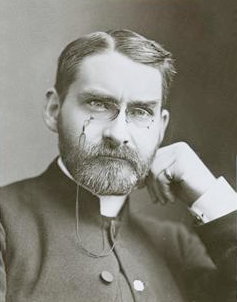
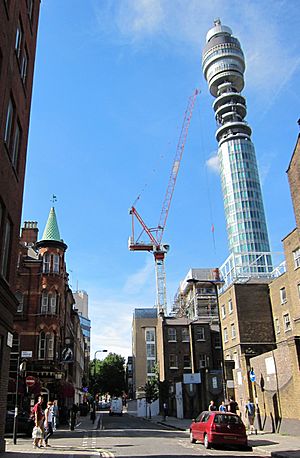
Eventually, Cleveland Hall was bought by the West London Methodist Mission. This mission was started by Hugh Price Hughes. The mission worked from 1889 to 1916. It focused on helping poor young women.
The mission spent £1,500 to change the hall into a mission hall. Upstairs, there was seating for 600 people. Downstairs, there were rooms for the same number of people and a kitchen. The front of the hall had a three-story building. This building now held a coffee shop, classrooms, and living spaces.
The Hall reopened in May 1890. Meetings were held there every night. An American visitor who attended the opening said the meeting was long and many people found new faith. In 1890, it was said the hall could support itself financially. However, it actually needed many generous donations to keep going. In February 1891, a special service was held for the Cleveland Hall Food Depot. This depot collected and gave out food to people who were hungry.
The mission held many activities. These included coffee concerts, lantern talks (slideshows), and a social hour for young men and women after the Sunday evening service. Clara Sophia [Mary] Neal ran a club for working girls at Cleveland Hall a few evenings a week. She said she deeply wanted to bring "beautiful things of life" to girls who worked hard for a living. She believed these clubs could be like schools for working women. She hoped these women would help change conditions for their social class in the future.
The Girls' Club was very successful. But in the autumn of 1895, Mary Neal and Emmeline Pethick left the mission. They wanted to start their own club for girls, called the Espérance Club. They wanted to be free from the mission's rules and try new things like dance and drama. The last records of the West London Mission using Cleveland Hall are from 1916.
From 1917 to 1929, the Hall was used as a clothing factory.
Images for kids
-
George Holyoake, a secularist lecturer who often spoke at the hall
-
Hugh Price Hughes, founder of the West London Methodist Mission
-
Cleveland Street today. The original street number 54 is now obfuscated by large modern developments. The Post Office Tower now occupies an entire block and is nominally number 60. The block south is nominally number 44 and is being redeveloped from its use as Middlesex Hospital. On the left-hand side of the street, the long-standing King & Queen public house saw the hall come and go. The Washington brigade of the Chartists met there in 1848. Over 100 years later radical folk singers met there — Bob Dylan gave an early impromptu performance in 1962.



